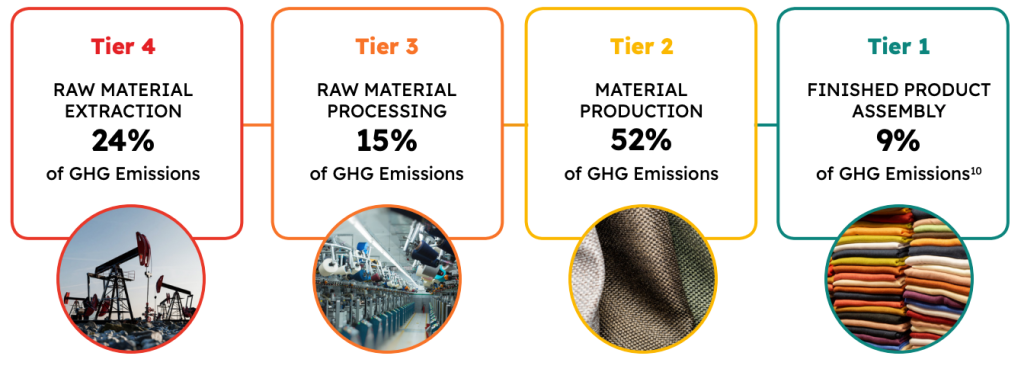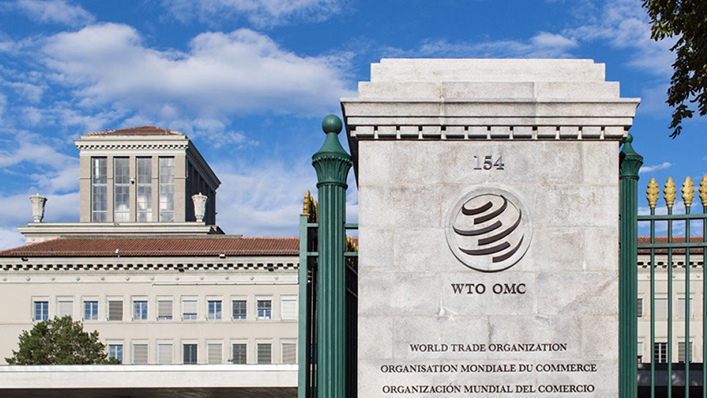Who got passing — and failing — grades on this fashion sustainability scorecard
The nonprofit Stand.earth warns of a 'perfect storm' for brands that don't help companies in their supply chains to decarbonize. The post Who got passing — and failing — grades on this fashion sustainability scorecard appeared first on Trellis.

No fashion brand deserves an A for effort to wind down its dependency on fossil fuels for energy and materials, according to activist group Stand.earth.
H&M Group earned a class-leading grade of B+ in the watchdog’s third Fossil-Free Fashion Scorecard of 42 fashion brands, suggesting that even a fast fashion business can make sustainability strides.
That contrasts with seven overall F’s handed down, including one for ultra-fast brand Shein. That company’s Scope 3 indirect emissions are skyrocketing as it continues a heavy dependence on polyester.
The report graded each company in five categories: climate commitments and transparency; renewable energy transition; advocacy; materials and circularity; and clean shipping. (Stand’s methodology included cross-referencing public reports with a survey it sent to businesses. Reviews by independent experts informed its letter grades.)
H&M stood out for financially backing suppliers’ attempt to slash emissions. It also scored an A+ for climate commitments and transparency, as it was the only company with a renewable energy target for emissions from raw material processing, that is, Tier 3 in the supply chain.
Similarly, sportswear and outdoor brands did best with climate commitments and transparency, including seven of the dozen brands with renewable energy targets for their supply chains. Patagonia and Puma each scored a C+. Yves Saint Laurent parent Kering, also with a C+, had the best showing among luxury brands, which tend to be cagey about their supply chain details. Mass market brands such as Eileen Fisher fared better than those in other categories by a full letter grade. They also nabbed better marks for use of low-carbon materials and circularity efforts.
Fossil fuels are woven into every step of apparel manufacturing, which makes up 4 percent of total greenhouse gas emissions, outpacing even the aviation industry, according to Stand’s report. The group advances a vision in which fashion phases out petroleum and coal, supports a “just transition” to a low-carbon economy and better engages the communities within their supply chains.
Stand was founded as ForestEthics in 2000. The San Francisco-based group, which originally targeted companies’ paper sourcing policies, takes credit for influencing 140 apparel businesses to ramp up their demand for renewable energy in manufacturing.
In this year’s report, the nonprofit issued a warning: “Unless brands act now to fund and enable the manufacturers and workers in their supply chain to deliver rapid climate action, building a more equitable model for the industry, this combination could create the perfect storm that sets the industry’s sustainability journey back, while leaving brands open to serious investor and reputational risk.”
Hall of fame — and shame
Eileen Fisher of Irvington, New York, came in second place overall with a B-. The only two A+ grades in one of the five sub-categories that Stand identified were H&M for commitments and transparency and Mammut for clean shipping.
Three companies received a C+ overall, including Gucci parent Kering, Levi Strauss and Patagonia.

At the bottom of the pack, Boohoo of Manchester, England, received Fs across the board. Barely beating it, Aritzia, Shein and Columbia each scored Fs in three categories, with a D- for materials and circularity.
“Dangerously out of step with climate action,” according to the report, Abercrombie & Fitch, Aritzia and Columbia Clothing have not even set targets for slashing Scope 3 emissions.

Key progress areas
Here are highlights from each of the five categories that Stand analyzed:
“Climate and energy commitments and transparency” — Two-thirds of brands maintain net zero goals, but only five companies revealed near-term, concrete steps to reach that achievement.
“A fair renewable and energy-efficient manufacturing transition” — More than half of the companies are actively helping suppliers decarbonize. But only H&M offers financing beyond loans.
“Climate and renewable energy advocacy” — H&M scored an A, followed by Bs for Eileen Fisher and Nike. H&M, Kering and LVMH were the only brands satisfying U.N. criteria for the integrity of their net zero targets.
“Low-carbon and deforestation-free materials” — Average grades rose to D from F since 2023, and 95 percent of brands offer resale or repair. Nearly one-third of the brands are actively pursuing circular textiles, but only Puma has set a deadline (2030) for using a specific share (30 percent) of textile-to-textile recycled polyester. Only six companies are seriously pursuing a majority of materials without petroleum-based synthetics.
“Greener shipping” — Almost two-thirds work upstream shipping into their Scope 3 emissions targets. However, just nine brands explain the modes of transport they use, and only six pledged to reduce air shipping. Heavy emissions continue, with no end in sight, for Fast Retailing, Inditex, Prada, Puma and Shein.

Recommendations for fashion purveyors
Stand shared seven recommendations for apparel and footwear companies seeking to accelerate decarbonization:
1. Create “just climate transition” plans detailing near-term steps for 2030 and long-term steps for 2050 toward net zero goals.
2. Work with other brands to help smaller companies along the supply chain to ditch coal in favor of efficient and renewable energy technologies.
3. Enhance equity in dealings with suppliers. This includes helping to finance decarbonization efforts, including favorable loan rates and financing that suppliers don’t need to pay back. Stand also advises providing long-term agreements.
4. Focus more on climate adaptation efforts tailored to localities, helping workers “through the impacts of climate breakdown.”
5. In manufacturing centers, boost collaborative advocacy for policy and infrastructure that helps suppliers use more renewables.
6. Stick with a plan to get rid of synthetic materials. The report called out “the limitations of false solutions like recycled polyester.”
7. Use less polluting transportation by creating emissions targets and planning for slower, less-polluting shipping.
The post Who got passing — and failing — grades on this fashion sustainability scorecard appeared first on Trellis.
What's Your Reaction?




























































